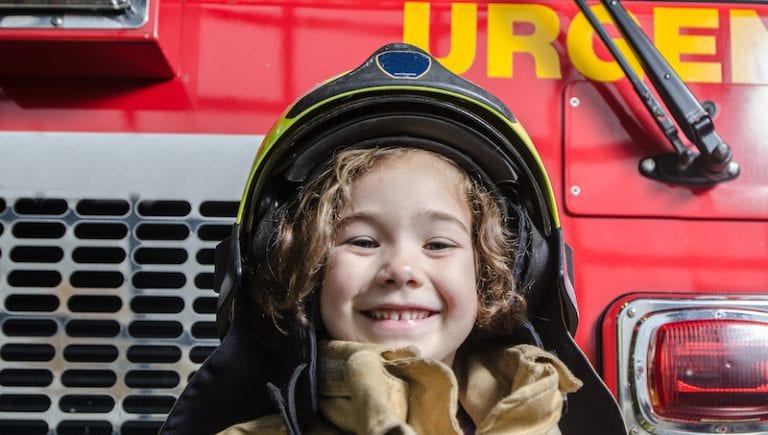Blurting out happens in pretty much every grade and classroom. Sometimes students are just eager to share the right answer. Other times, they just want to share their opinion or story. No matter the reason, it’s a very real (and challenging) dilemma for teachers. How should blurting out be handled?
We went to the educators on the WeAreTeachers HELPLINE group on Facebook for their advice and wisdom, and they definitely came through. Here are some of the best tips for blurting out. Plus, check out this video from Elizabeth Coller with the Kinderhearted Classroom for her great tips.
[embedyt] https://www.youtube.com/watch?v=twNVhAPGNr4[/embedyt]
Encourage active listening.
When students learn active listening, they are encouraged to focus on what the speaker is saying. This is something Elizabeth C. even uses with her kindergarteners. “I teach all the students who had their hand raised that after I call on a student, they put their hands in their lap, and they shift their eyes to the speaker,” she says.
Avoid negative reinforcement.
Don’t put a child’s name on the board when they blurt out because it calls attention to the negative behavior. Instead, reverse it and tell students you will put their name on the board when they are showing the kind of behavior you DO want to see. “Put a student’s name on the board when they are working well, respecting rules, etc.,” says Kathy H.
Another example of this is from Meg E., who says she will give feathers (kind of like raffle tickets) or Class Dojo points to recognize positive behavior.
[contextly_auto_sidebar]
Give students an incentive.
“Incentivize active listening by giving students blurt cubes, coins, beans, or erasers,” says Elizabeth. “I use a strategy in class where I give students points based on how many counters they have left.”
Heather M. uses Popsicle sticks, which she calls shout-out sticks. If students lose all their sticks, there’s a consequence. But there’s pride in wanting to keep them all. Plus, having something physical is a handy reminder.
Help students become more aware.
Teacher Kathy H. has a system that works like a charm. She writes, “Without giving a student advance notice, I put a paper clip on the counter or in a dish every time they blurt out. Then at the end of the day, I talk to them and ask them how many times they think they disrupted the class.”
Kathy says students have to count the paper clips themselves, and they’re often shocked to see how many there are. She will track this for a week, allowing her to work with the student and let them see how much progress they make along the way.
Help kids understand how a filter works.
Monica S. writes, “I tell students they have a brain [point to your head] a mouth [point to your mouth] and in between, there’s a filter. Let them know that not everything in their brain needs to come out of their mouth.”
Of course, this is easy to say, but the real value and understanding comes when students practice their filter in everyday situations. Encourage students to do this with you and with each other. Seeing it in action really helps.
Give kids movement breaks.
Sometimes it’s just a matter of getting kids up and moving more! If you’re spending too much time lecturing or in discussion with wiggly students, then try Melissa Z.’s idea. She writes, “Try offering movement breaks throughout the day. I know it can be hard to give up the classroom time to try this, but it might be worth it.”
Another genius idea we saw was from Lydia D., who says her school’s gym teacher offers roadrunner passes to kids. When kids need to run off some energy, they can earn a pass so they can go down to the gym for a break.
Don’t forget to tell kids why blurting out isn’t okay.
Gina R. says sometimes we just need to take the time to offer an explanation. She says some kids get so excited about sharing the answer, and she’s found that once she explains blurting out to them, they are a lot more aware. She writes, “Try telling the student that it’s thinking time for other students. The blurting out and constant wanting to answer the question doesn’t allow you to see how other students are thinking.”
Let them say what they need to—on a sticky note.
Post-its can be a great tool for dealing with kids who blurt out often. “I have them write things on Post-it Notes and put it on my desk,” writes Melisa W. “About 90 percent of the time, they just want someone to have heard their idea.”
Chelsea L. says she once worked with a group of gifted students who were all eager to share their answers. She had students put their answers on whiteboards. Then they could all share their answers at once (when she asked), and/or they could share with someone sitting next to them. This gave everyone a chance to answer every single time.
Read literature on the subject.
Books are some of a teacher’s best tools. “My Mouth is a Volcano is one of my favorites,” says Elizabeth C. “This book teaches strategies to students to help them know when it’s appropriate to talk and when it’s not.”
Another book to try is Interrupting Chicken.
Personalize your approach as needed.
Teachers know that what works for one student doesn’t necessarily work for another. So all good teachers are ready to adapt as needed. Bobi C. says she had a student once who couldn’t stop himself from blurting out. She had a chat with him about how he needs to be fair to other kids, too. So they came up with a secret signal instead. This way, the student was able to let her know he knew the answer but he was choosing to let other students answer instead.
It really helped him become more aware of the other students. Plus, he mostly just wanted to be recognized for knowing the answer. She said he improved so much after they developed this method.
Eliminate hand raising altogether.
“My classroom is a no hand-raising zone,” writes Shelly G. Instead, she’ll use a name generator or pull sticks to call on kids. “They just know this is the classroom system, so it keeps them from always raising their hands and/or blurting out when it’s not their turn.”
Many other teachers back up her success with pulling sticks. This way, there’s no argument or discussion about whose turn it is.
What are your tips for blurting out? Come and share your ideas in our WeAreTeachers HELPLINE group on Facebook.
Plus, get our tips for classroom management, according to the wonderful Mary Poppins.

